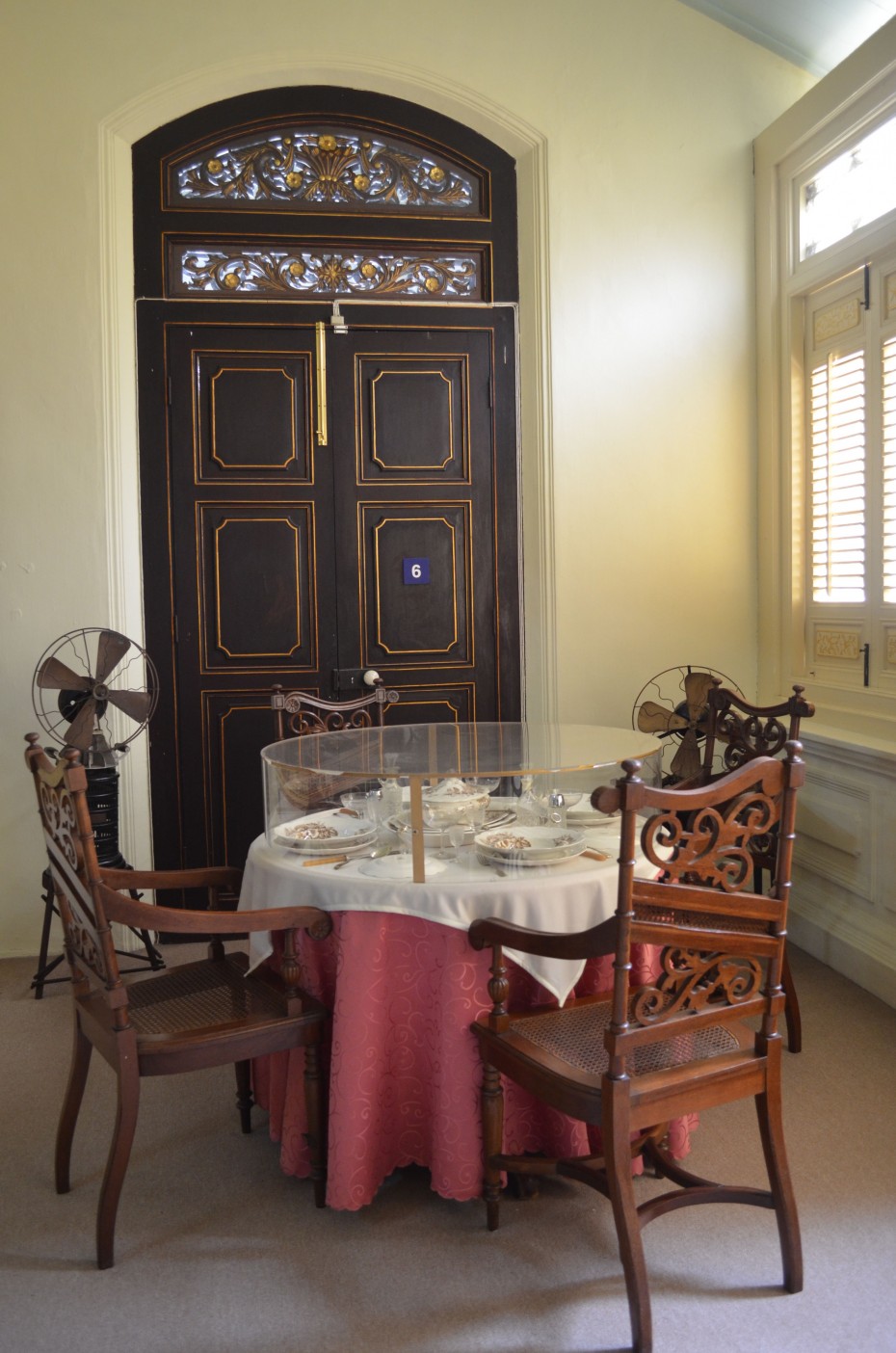THERE’S something incredibly fascinating about Peranakan Chinese culture, especially because of its convergence of different ethnic traditions, and the extravagant lifestyles of its people in days gone by.
And there’s probably no better place to learn about and experience that culture than the Baba & Nyonya Heritage Museum in Jalan Tun Tan Cheng Lock, better known as Heeren Street, in Malacca.
The late Chan Kim Lay converted his family’s traditional Peranakan home into the museum in 1985, and his niece Melissa Chan is now its curator.
“The everyday objects and furniture you see in the museum were used by our family before World War II and very little has changed since then,” said Chan.
“So by touring the house, visitors will get a feel of how people used to live. And they will notice the strong family values, such as honouring their ancestors and keeping families ties strong.”

A replica of a dining area at the Chan family’s Baba & Nyonya Heritage museum. The family had three separate sets of tableware and silverware, all for different occasions.
The BRATs were given an hour-long tour by Christina Ong, the museum’s lead tour guide, who showed us some exquisite and intricate wooden carvings around the house, which were produced by craftsmen brought all the way from China.
Further evidence of the family’s wealth could be seen in the embroidered silk artwork hung on the walls, as well as the gorgeous Victorian tiles on the floors.
The gold-gilded staircase, made without any nails, is also a sight to behold. Not only is it beautiful, but it also has a special feature – wooden panels at the top allowed the family to seal the staircase at night for security.
“It also prevents husbands from going out or coming home late at night!” said Ong jokingly.
Ong also explained a lot about the Peranakan people’s lavish 12-day weddings, which are filled with rituals derived from both Malay and Chinese cultures.
Before the wedding, a hair combing ceremony will take place for both the bride and groom, which signifies their coming of age. This pre-nuptial ceremony, which is still practised in modern day Peranakan weddings, is considered sacred.
The Malay influences include joget dancing and dondang sayang pantun recitals performed in Baba Malay, as well as the serving of nasi lemak during the wedding feast on the last day.
To ensure the bride looks her best on her big day (more like days), Ong said goldsmiths were commissioned to work at the family’s house, where they would work daily on the bridal jewellery, which included a headgear made out of around 100 silver and gold pins.
Their wedding attire is equally ornate. According to Ong, preserving wedding dresses is very important, as they are passed down from generation to generation.
Today, Chan’s family still owns a bridal costume from the Qing dynasty and a groom’s costume from the Ming dynasty. Both are on display at the museum.



Tell us what you think!